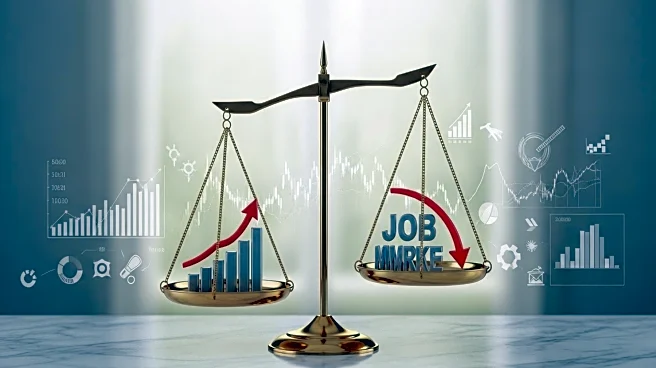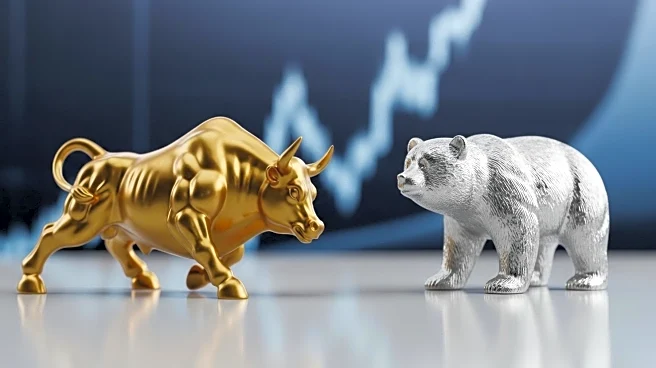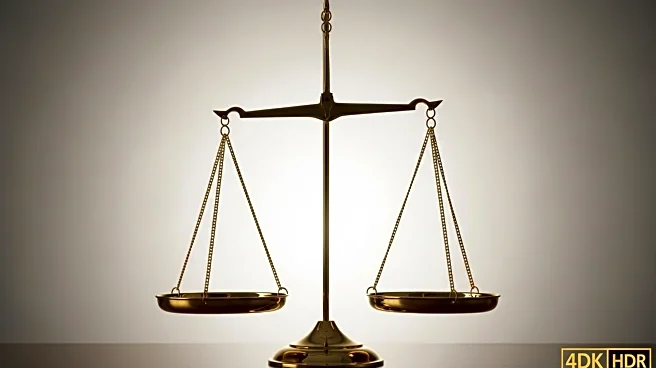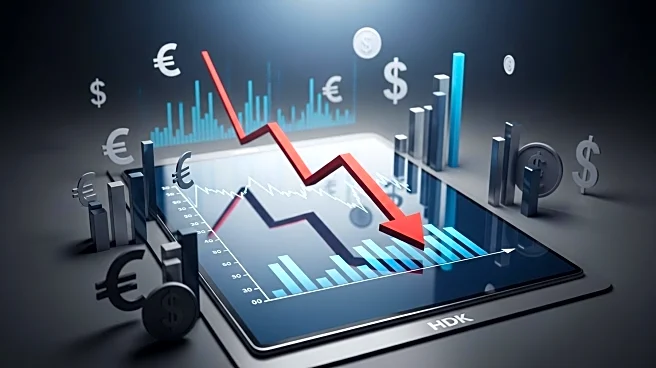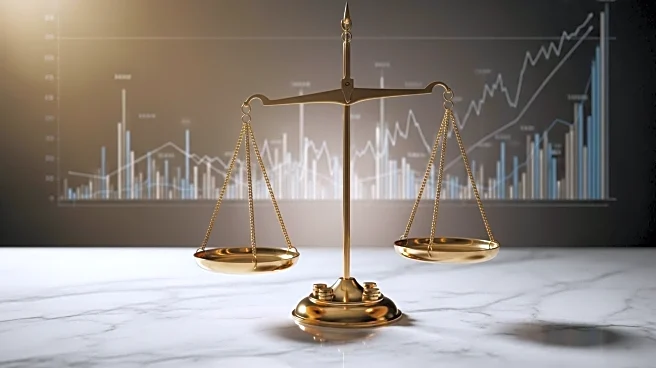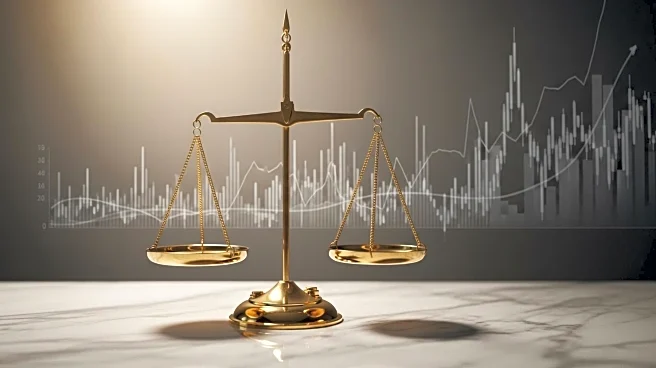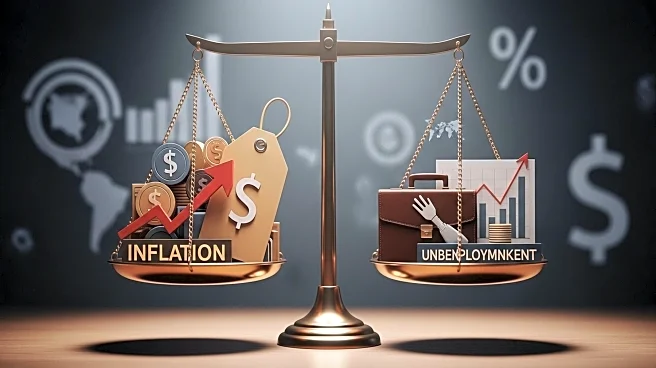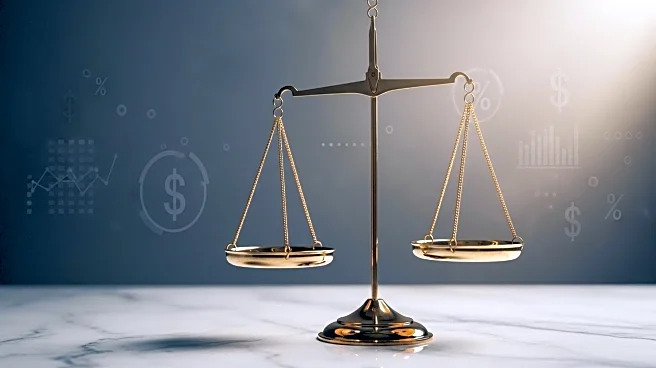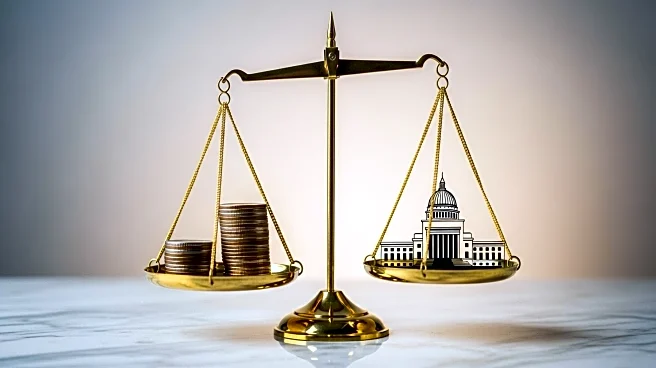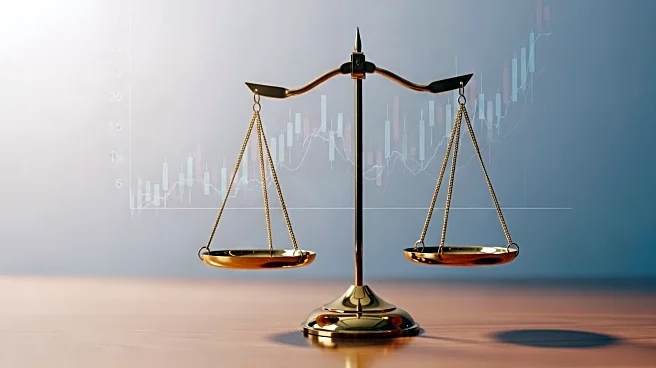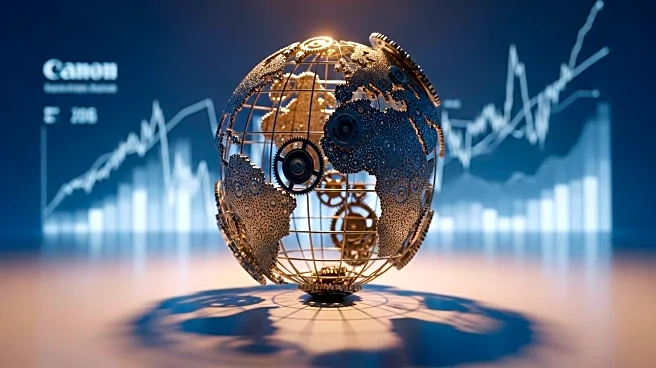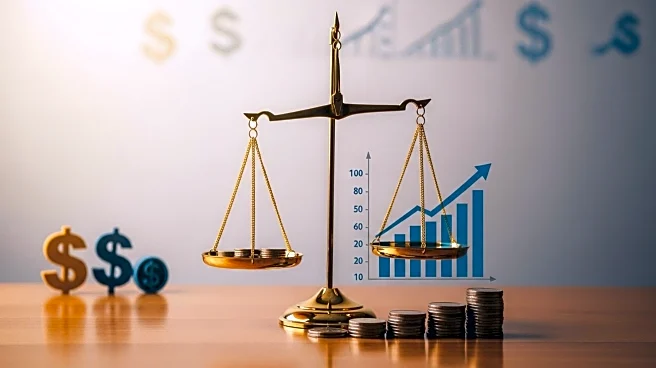What is the story about?
What's Happening?
The Bureau of Labor Statistics reported a significant rise in inflation, with the Consumer Price Index (CPI) increasing by 0.4% in August, marking a 2.9% annual increase. This acceleration in inflation is the fastest pace recorded this year. The core CPI, which excludes volatile food and energy prices, rose by 3.1% over the past 12 months. Concurrently, the job market is showing signs of weakening, with 263,000 people filing for jobless benefits last week, the highest since October 2021. The Federal Reserve is considering cutting the main interest rate to stimulate the economy, as inflation remains above their 2% target.
Why It's Important?
The rise in inflation, driven by tariffs and increased costs in housing, food, and vehicles, poses a challenge for the Federal Reserve, which is tasked with balancing inflation control and employment. The current economic scenario suggests that consumers may reduce spending, leading businesses to cut back on investments and potentially lay off workers. This could exacerbate the slowdown in the job market, which is already seeing increased unemployment claims. The Federal Reserve's potential rate cut aims to address these issues, but it also highlights the delicate balance between stimulating economic growth and controlling inflation.
What's Next?
The Federal Reserve is expected to make a decision on interest rates at their upcoming meeting. Economists are divided on whether the focus should be on employment or price stability. The outcome of this decision will have significant implications for the U.S. economy, potentially affecting consumer spending, business investments, and overall economic growth. Stakeholders, including businesses and policymakers, will be closely monitoring the Federal Reserve's actions and their impact on the economy.
AI Generated Content
Do you find this article useful?
